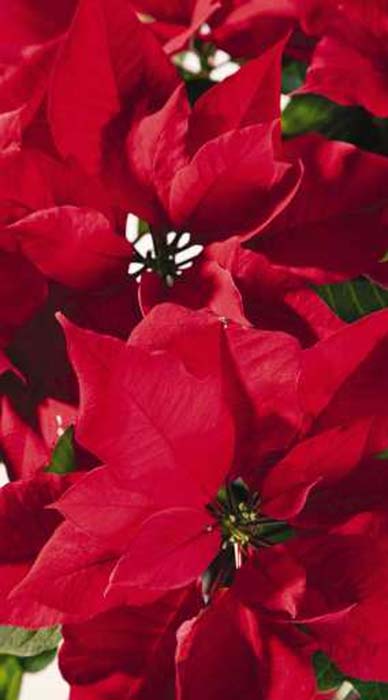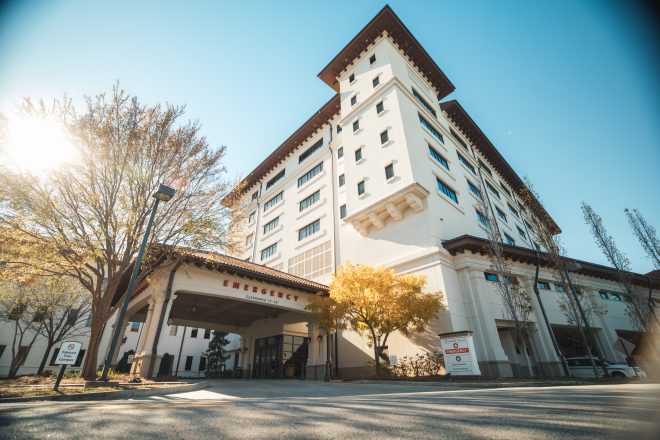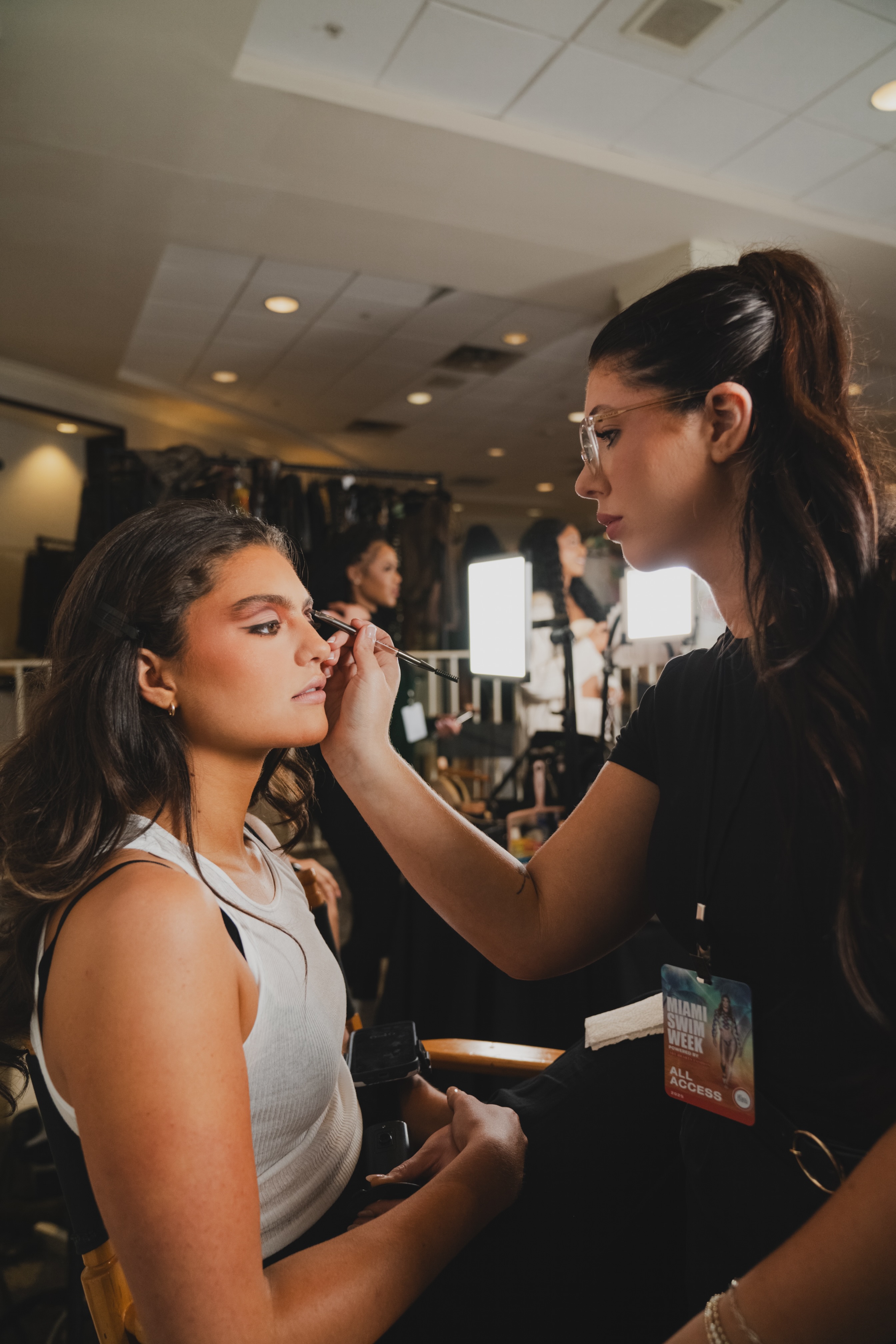Poinsettias take center stage at Christmas
Published 5:22 pm Friday, December 12, 2014

- Poinsettias will last through the Christmas season and beyond.
“Christmas gift suggestions: To your enemy, forgiveness. To an opponent, tolerance. To a friend, your heart. To a customer, service. To all, charity. To every child, a good example. To yourself, respect.” — Oren Arnold
“Remember, if Christmas isn’t found in your heart, you won’t find it under a tree.” — Charlotte Carpenter.
Trending
It’s looking alot like Christmas as you travel about town and observe the decorations. Of the many home and office arrangements, the poinsettias take center stage at Christmas. These brightly colored plants are a definite indication that the Christmas season has arrived and are very much a part of our Christmas decor.
The poinsettia is known throughout Mexico and Guatemala as “La Flor de la Nochebuena” (the Flower of the Holy Night, or Christmas Eve). In Chile and Peru, it is called the “Crown of the Andes” and in Spain it has a different holiday attribution (“Flor de Pascua”) meaning the “Easter flower”. From the 14th to the 16th centuries, the Aztecs (Mexico) used the sap of the poinsettia to control fevers and the bracts (modified leaves) were used to make a reddish dye.
Poinsettias were so named in the United States in honor of Joel Roberts Poinsett (botanist, physician and the first U. S. Ambassador to Mexico). While in Mexico and with an interest in botany, he scouted the countryside in search of new plant species. And, in 1828 he found a beautiful shrub with large red flowers growing alongside a country road. He took cuttings from the plant and propagated them in his greenhouse in Charleston, South Carolina. Poinsett had an outstanding career as a congressman and ambassador, but his greatest contribution to society was the introduction of the poinsettia into this country.
Poinsettia Day was December 12 which marks the death of Joel Roberts Poinsett in 1851. Also, the 2014 San Diego County Credit Union Poinsettia Bowl features San Diego State University vs. Navy on the 23rd of this month at Qualcomm Stadium in San Diego, CA.
The showy colored parts of poinsettias are actually modified leaves (bracts) not flowers. The actual flowers (yellow) are located in the center of these colorful bracts. The poinsettia drops its bracts and leaves immediately after the flowers shed their pollen. Therefore, choose those plants with little or no yellow pollen showing for the longest duration of color.
Poinsettias are not poisonous. University studies have shown that 500 to 600 leaves would have to be ingested to have any side effects (upset stomach and vomiting). And, since the leaves are not very tasty it is highly unlikely that people or pets would be harmed from ingestion. However, many plants in the Euphorbiaceae family discharge a milky sap which could cause a skin reaction in people with latex allergies.
Trending
Poinsettias will not tolerate frost, but they will grow in temperate coastal climates (southern California) reaching upwards to 10 feet tall. The colors of the bracts are created through photoperiodism (darkness control) requiring darkness for 12 continuous hours at a time for at least five days in a row to change bract color. However, once poinsettias complete the process of photoperiodism, they require abundant light during the day for the brightest and most attractive color.
Over 100 varieties (Premium Picasso, Prestige Red, Monet Twilight, Shimmer, Surprise, etc.) of poinsettias are available in the marketplace in colors of red, pink, white, yellow, purple, salmon, and multi-colors. The red poinsettia continues to be the color of choice with Prestige Red being a best-selling hybrid. Also, poinsettias are the best-selling potted plant in the U.S. and Canada. Poinsettias are the most popular Christmas plant with most of them being sold within a six-week period prior to Christmas. The value of the poinsettia as a holiday plant drops immediately upon the arrival of Christmas Day.
Poinsettias will last through the Christmas season and beyond. In addition to price, here are some pointers to follow in your selection process. Select a plant with dark green foliage down to the soil line or to the top of the container. Select a plant with bracts (modified leaves) that are completely colored. Select a plant which does not have a lot of green around the bract edges. Select a plant that does not have fallen or yellow leaves. Select a plant that looks full, balanced and attractive from all sides.
Also, select a plant that is 2 1/2 times taller than the diameter of the container. Select a plant that is not drooping or wilting. Select a plant that is not displayed in paper or plastic sleeves since plants held in sleeves will deteriorate more quickly (the sleeves are for transporting only). Select a plant that has not been displayed or crowded close together (crowding can cause premature bract loss). Select a plant that has moderate soil moisture (if it’s wet and the plant is beginning to wilt, this could be an indication of root rot).
Also, select a plant that is pest-free (check the undersides of leaves for aphids and whiteflies). Select a plant that is mature (check the true flowers which are located at the base of the colored bracts – green or red-tipped flowers will have greater longevity than the ones with yellow pollen covering the flowers). After your purchase and placement in the home, be sure to cover it for cold protection if it is exposed to outside temperatures below 50°F.
The length of time that your poinsettia will maintain its color and vigor is dependent on the maturity of the plant, when you bought it, and how you treat it. If given proper care and maintenance, poinsettias should keep their beauty for weeks (some high quality varieties will remain attractive for months). After you have made your poinsettia selection and purchase, be sure that it is wrapped properly because exposure to low temperatures (even for a few minutes) can damage the bracts and leaves.
Upon delivery, unwrap your poinsettia carefully from the sleeve and place in indirect light (about six hours of light daily is ideal). Once positioned in the home, the plant should not be touching cold windows. Also, be sure to keep it away from warm or cold drafts, air vents or open doors and windows. Poinsettias prefer daytime temperatures of 60 to 70°F and night time temperatures around 55°F (high temperatures will shorten its life). Keep a daily check on the plant to ascertain good quality and to monitor the micro-environmental effects (if any) from its new placement in the home.
Monitor the plant daily by checking soil moisture, good drainage, leaf responses to water and heating/cooling, and good vigor. Plants impacted by wilt tend to drop bracts prematurely. Fertilize the poinsettia if you keep it past the holiday season by applying a good quality houseplant fertilizer once a month at label rates. Do not fertilize when the poinsettia is in bloom. With appropriate care and maintenance, the poinsettia should be on display about 6-8 weeks in your home.
Enjoy your Christmas season and may your poinsettias provide you an atmosphere filled with ornamental appeal and spiritual contentment. Many Happy Birthday wishes to my wonderful wife Jennifer on December 13 and my awesome daughter Autumn on December 17! A very Merry CHRISTmas season to all and to all, continued Happy December activities with family and friends! And, as always, remember to feed and water the birds in your neighborhood and protect your pets from cold weather.
“For I am convinced that neither death nor life, neither angels nor demons, neither the present nor the future, nor any powers, neither height nor depth, nor anything else in all creation, will be able to separate us from the love of God that is in Christ Jesus our Lord.” — Romans 8: 38-39
Seagle is a Sustainability Associate, Golf Environment Organization (Scotland), Agronomist and Horticulturalist, CSI: Seagle (Consulting Services International), Professor Emeritus and Honorary Alumnus, Abraham Baldwin Agricultural College, and Associate Editor of The Golf Course, International Journal of Golf Science. Direct inquiries to eddie@csiseagle.com.





